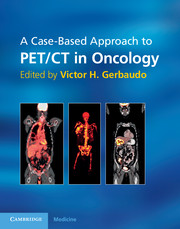Book contents
- Frontmatter
- Contents
- Contributors
- Foreword
- Preface
- Part I General concepts of PET and PET/CT imaging
- Chapter 1 PET and PET/CT physics, instrumentation, and artifacts
- Chapter 2 PET probes for oncology
- Chapter 3 PET/CT information systems
- Chapter 4 Functional anatomy of the FDG image
- Part II Oncologic applications
- Index
- References
Chapter 2 - PET probes for oncology
from Part I - General concepts of PET and PET/CT imaging
Published online by Cambridge University Press: 05 September 2012
- Frontmatter
- Contents
- Contributors
- Foreword
- Preface
- Part I General concepts of PET and PET/CT imaging
- Chapter 1 PET and PET/CT physics, instrumentation, and artifacts
- Chapter 2 PET probes for oncology
- Chapter 3 PET/CT information systems
- Chapter 4 Functional anatomy of the FDG image
- Part II Oncologic applications
- Index
- References
Summary
Introduction
Although current clinical PET imaging of cancer predominantly utilizes the glycolysis probe, 18F-fluorodeoxyglucose (FDG), a large effort is being made to discover, develop and clinically implement novel PET probes to evaluate other aspects of the tumor microenvironment and cancer cell biology. In this chapter, we discuss the major areas of novel PET probe development with emphasis on those probes that have been implemented in clinical studies and may be in routine use in some PET imaging centers. We have structured each section with an introduction to the significance of the targeted biological process, a brief description of the synthesis of the probe, and a summary of the reported clinical applications. It is shown that PET probes represent a growing armamentarium for use in diagnosing and monitoring treatment of human tumors.
Significance
D-glucose is metabolized in normal living cells via glycolysis, a 10-step process ultimately forming two molecules each of pyruvate, NADH, ATP, H+, and water. In normal tissue, pyruvate is generally oxidized to CO2 in the mitochondria to form an additional 34 molecules of ATP. Tumors exhibit enhanced glycolysis and conversion of pyruvate to lactate even in the presence of oxygen. This phenomenon was first noted by Warburg (1) and recently linked to expression of the M2 splice isoform of pyruvate kinase (2). As a consequence of decreased ATP production, glucose uptake is increased to meet the energy requirements of rapid cell division. The upregulation of glucose uptake in tumor tissue relative to normal tissue provides an effective means for differentiating a variety of cancers including lymphoma (Hodgkin’s and non-Hodgkin’s), colorectal, head and neck, breast, lung, and melanoma. Largely due to their biochemical association with tumor viability, glucose-derived PET probes have been studied for over 30 years and represent one of the most clinically utilized classes of radiopharmaceuticals.
- Type
- Chapter
- Information
- A Case-Based Approach to PET/CT in Oncology , pp. 19 - 33Publisher: Cambridge University PressPrint publication year: 2012

